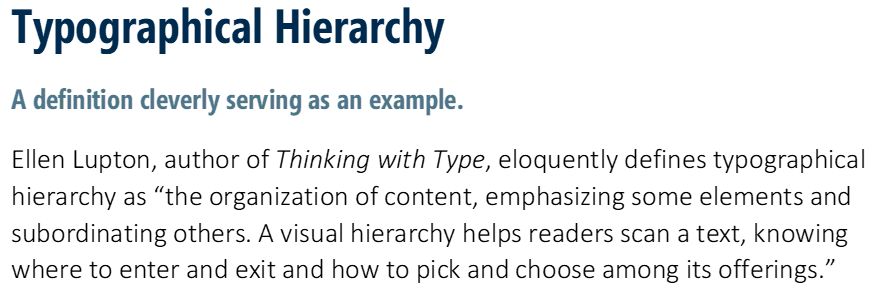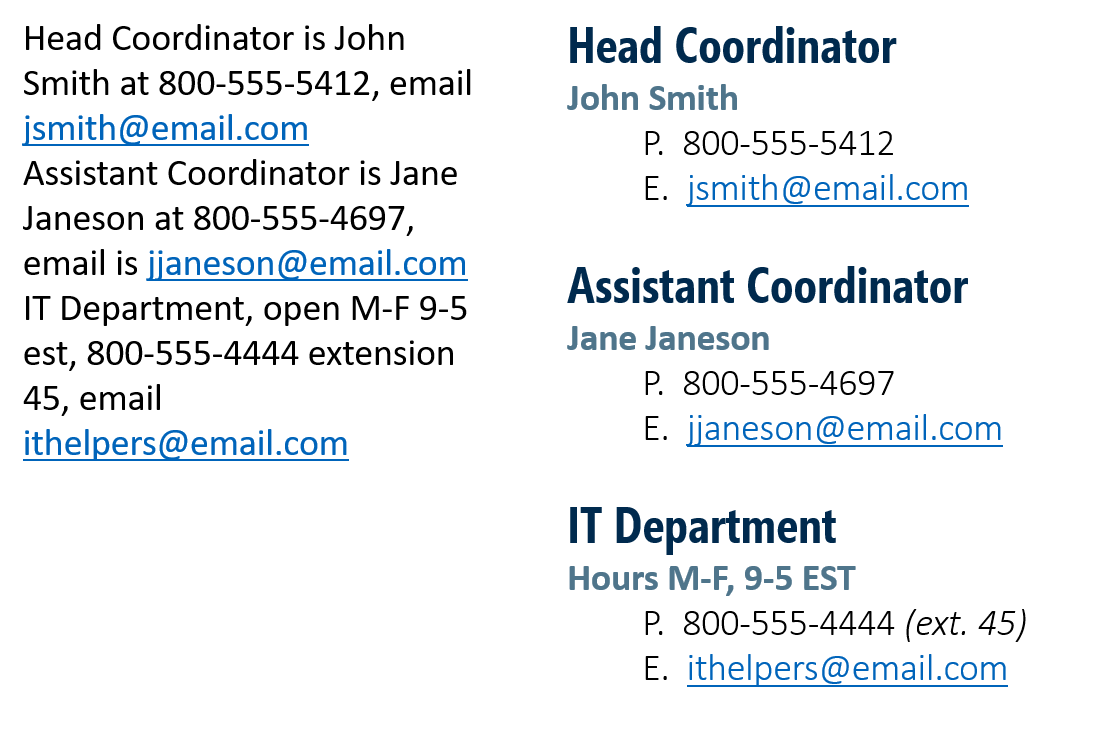Creating Healthy Boundaries
By Jessica Carlson, Employee Benefits Consultant
Do you have a hard time saying no to people? What if someone needs a simple favor or needs to borrow money? What about at work? Are you busy and someone you work with needs something done ASAP? How do you decide what takes priority?
Setting boundaries is essential, to healthy relationships with others and for your own mental health. You know what they say; lack of preparation on your part does not constitute an emergency on my part.
So, how do you draw healthy boundaries in both your personal life and your professional life? This is something that I have had to work on myself. Even when I have made clear what I want/need, people still push to get what they want out of me to the point that I have lied to or completely ignored them because I feel guilty for saying no.
Professionally, I find it much easier to say no. I am not worried about hurting someone else’s feelings. I know what my workload looks like and if I have time to assist with your project. I am willing to help and will prioritize what’s more important to complete right away, vs. what can wait a few days.
Healthy boundaries will help you make decisions that are best for you and not necessarily the people around you. They can also help to improve our self-esteem and build confidence. Here are a few ideas that can help with creating healthy boundaries at work:
- Prioritize yourself – Forget about other people’s feelings sometimes and give yourself permission to put yourself first. Your feelings are just as important as theirs are.
- Self-Awareness – When something or someone is making you feel guilty or stressed, try to figure out why it is happening. Is there any part of this situation that you can control to minimize those feelings?
- Start slowly – Everything takes practice. Begin with something that seems small and not threatening and build your way up to something more challenging. Do not start with something that would make you uncomfortable.
- Be flexible – It is important to have firm boundaries in most cases but sometimes if you are too rigid, there can be issues. You will occasionally want to reevaluate the situation and make adjustments if necessary.
- Set realistic expectations – Know your limits. This is important so that you do not over promise and under deliver. There are always going to be obstacles to any project that you are working on so it is important to choose flexible deadlines. Under promise and over deliver that way it seems that you are going the extra mile.
- Communicate – If you are overloaded at work, give yourself permission to say no. If there is no way you are going to finish the project that you are already working on by the deadline, it is ok to say no to taking on additional tasks. Communication is the key to avoiding future misunderstandings.
- Delegate – If you do not have time to complete something ask yourself; is this project better completed by someone else? Is there another colleague that has less of a workload and may be better suited to finish this project?
- Be prepared – You will experience pushback. Building healthy boundaries is not done overnight. Sometimes people are completely oblivious that you are busy and focused, demanding your attention. This can be a good time to let them know when it is an acceptable time to interrupt you and set realistic expectations.
In your attempt to create healthy boundaries, whether it is in your personal or professional life, you discover that people continually and combatively ignore or discount your boundaries it may be time to move on. You may be in a toxic environment/relationship and the only thing that you can truly control is you and your mental health.
- Published in Blog
Long Live the Hierarchy
By Jennifer Outcelt, RISQ Consulting Account Specialist
I love hierarchy, don’t you? It’s just so much nicer when you can easily separate the important from the masses. Clear leaders guiding your mind is the only way to maintain order. Without hierarchy countless systems would devolve into chaos… What’s that? You think I have extreme political views? Oh wow! I’m not talking politics! No, no, no, no, no. I’m talking about Typographical Hierarchy, silly! You know, the visual hierarchy you see in written content that helps your mind separate titles, from headings, from subheadings, from main body text.
Gosh, I’m so embarrassed for causing that confusion. Let me make it up to you by explaining a bit more about what typographical hierarchy is.
You may have noticed the structure of this post changed a bit there. I hope you weren’t too disoriented. In fact, you were probably finally oriented! BOOM! You my friend have been typographically hierarchized. First, you saw big, bold, blue text that told you exactly what the rest of the text was about. Then, you saw smaller, light-blue text that narrowed down the focus of the rest of the text. Finally, you saw the actual text. The meat of it. And now you’ve learned something.
In all likelihood you’re already familiar with this text structure. You see it every day. It shows up in magazines, websites, advertisements, newspapers, and pretty much any industry with the slightest graphic design budget. Maybe you recognize it but can’t put your finger on why it’s so effective. Sure, I could have buried that definition inside a big paragraph for you, but how would your eyes have known where to look for a definition? This structure is even more helpful when you have a variety of subjects appearing on the same page. In an online retail situation, the product thumbnail serves as the title, the product description as the heading, and the price as the subheading (or heading if you’re as budget driven as me). Which of these two contact lists would you rather sift through?
I’d put money down you prefer the one on the right. Why? Because it’s easy to find exactly what you want and we like being lazy. Good typographical hierarchy works hard so your brain doesn’t have to. That’s what I call a good tool.
If you want to learn more about typographical hierarchy from someone much smarter than I am, then check out this site about the book Thinking with Type. If it piques your interest, then I recommend reading the whole book. It’s a truly fascinating read for those who like to look behind the green curtain. I just love typographical hierarchy, don’t you?
- Published in Blog
Workers’ Compensation Benefits Overview
This article is from RISQ Consulting’s MyWave Connect portal, a resource available to all RISQ Consulting clients. Please contact your Benefits Consultant or Account Executive for more information or for help setting up your own login.
Workers’ Compensation Benefits Overview
When employers purchase workers’ compensation insurance, such a policy is used to cover expenses that result from employees becoming injured on the job. These policies also cover employees who experience occupational diseases that were caused by work. This coverage includes the following benefits:
- Medical treatments
- Disability benefits
- Vocational rehabilitation
- Death benefits
It is important for employers to understand the different types of benefits that employees can receive under workers’ compensation coverage. By doing so, employers can monitor their workers’ compensation claims and save money, while also providing a better claim experience for their employees.
Medical Benefits
Medical benefits are the benefits that are paid out by a company’s workers’ compensation insurance policy for an employee’s medical treatment. This coverage pays for the medical treatment necessary to treat the employee’s work-related injury.
Any medical treatment that the employee receives will be covered, so long as it is considered medically necessary or reasonable to treat the work-related injury. Alternative medicine treatments are normally not covered by workers’ compensation coverage.
There are specific statutory requirements and limitations for types of medical treatments covered by workers’ compensation insurance, but these requirements vary by state.
Disability Benefits
There are several different disability benefits available for employees under workers’ compensation coverage, known as wage replacement benefits. These benefits take the place of the employee’s wages if they are out of work due to a work-related injury or the benefits are a supplement to an employee’s wages while they are unable to return to work in full capacity due to the work-related injury. These benefits include:
- Temporary Total Disability (TTD)—These benefits are used when an employee must take off of work completely until they have healed and are able to return to work per a physician’s medical release. Each state’s percentage paid can vary, so it is important to check the state the workers’ compensation claim is filed in. Once the employee is able to return to work, these benefits are discontinued.
- Temporary Partial Disability (TPD)—These benefits apply when an employee is allowed to return to work in a limited capacity per a physician’s order. This can mean the employee might work for fewer hours or in a different type of job role (e.g., transitioning to light-duty tasks). Once the employee is able to return to work at full capacity, these benefits are discontinued.
- Permanent Partial Disability (PPD) – These benefits are used when an employee has a permanent disability, but is still able to continue working in a limited capacity. The percentage rating of an employee’s disability is determined when the employee has reached maximum medical improvement (MMI)—meaning the employee is not going to improve from the injury any further. The physician then determines the severity of the disability and assigns a percentage. An employee will not be able to work in the role they did prior to the injury and will have to switch job roles to accommodate their disability. PPD may also require shorter workdays or other work restrictions.
- Permanent Total Disability (PTD)—These benefits apply when an employee reaches MMI and is unable to return to work in any capacity due to becoming permanently disabled by their work-related injury. This decision has to be made by a physician. The employee will be given a disability rating and must qualify for PTD, which varies by state. In most states, these benefits apply to the loss of body parts as well. These benefits will run until there is a settlement reached or the employee is able to collect Medicare. Each state has its own laws concerning workers’ compensation benefits, so employers should seek legal counsel for specific questions.
In any workers’ compensation case, the restrictions of the employee should be determined by the treating physician.
Vocational Rehabilitation Benefits
If an employee has been injured and is not able to return to their previous job due to a work-related injury, vocational rehabilitation benefits can help them reenter the job market. These benefits provide services such as:
- Career planning
- Job placement
- Skills training
These benefits are meant to help employees return to work when they would otherwise be unable to do so. The services provided by these benefits vary by state.
Death and Dependency Benefits
These benefits are paid out when an employee is killed from a work-related accident or injury, or experiences an occupational disease that results in death. Depending on the state in which the employee was employed, a surviving spouse or relative may be eligible to receive compensation to make up for the decedent’s wages. The amount of compensation received and how long the benefits last will depend on the state in which the benefits are being paid.
Depending on the state, dependent children can also receive additional benefits. Normally, such children must be under the age of 18 or continue to be dependent on their parents after the age of 18 due to mental or physical impairment or incapacity.
Another expense that workers’ compensation insurance provides through death benefits is funeral expenses. If an employee is killed in a work-related accident or due to an occupational disease, they will have either a portion or all of their funeral expenses paid for. The amount paid varies by state.
The Importance of Understanding Workers’ Compensation Benefits
Employers should understand all aspects of a workers’ compensation claim, as it will allow them to have conversations with their employees regarding workers’ compensation benefits. By understanding the claim process, employers can effectively speak with affected employees concerning any claim-related questions that may arise. If an employer is unable to answer these questions, they should consult their workers’ compensation insurance carrier to figure out the answers.
Another reason that understanding the workers’ compensation claim process is important is that it affects a company’s bottom line. By understanding the different components of a workers’ compensation claim, an employer can review the cost of the claim, understand which benefits are being paid and why, determine how much the insurance carrier set aside for reserves for the employee’s injury and why, and determine whether the case should remain open or be closed out. All of these components can affect an employer’s bottom line.
Overall, understanding the entire workers’ compensation claim process—specifically, which benefits your employees can receive—can allow an employer to leverage their workers’ compensation policy effectively and minimize claim-related expenses.
Contact us today to discuss all of your workers’ compensation needs.
- Published in Blog
Reflecting on the Last Year
By Andrew Kupperman, RISQ Consulting Employer Services and Workforce Technology Consultant, SHRM-CP
We are now past the 1st year anniversary of the COVID-19 pandemic. Things do seem to be turning in the right direction from the perspective of getting closer to life as we knew it prior to this monumental event that’s impacted all of us. While it certainly won’t exactly be the same, we are getting nearer to that new normal. And remember, according to my blog post back in July, the new normal does require adoption and openness of change to our everyday lives.
In reflecting over the past year, there was certainly a lot of different things to stress over in our personal lives. Initially there was worrying about contracting COVID and not knowing how it might impact you and those in close contact with you. Then there became this air of mystery around not having a great sense of how long we’d be in this state of pandemic, which included our initial expectations continually being extended. On top of all of this, we were also faced with the most contentious election year most of us have experienced.
While these things became a big concern, almost all of us then needed to worry about at least one of the following: the impact to their employment, changes in how they worked, or how to balance work with needing to now be the primary daily childcare provider while schools, camps, and day cares couldn’t fully operate. All these things, combined with the pandemic environment, left many of us often feeling isolated, confused, and overwhelmed.
In our constant state of isolation, many of us often turned to the internet for answers, which in most cases was not a wise option. Others tried to focus on work (if it was still available), while others had more time to spend with immediate family and find solace in that.
Personally, my work life hasn’t been easy over the last year, as I know it hasn’t been for many people. There’s been the need to know about new and constantly changing regulations that’s impacted many of our clients, who have been facing very difficult business decisions of their own. There also hasn’t been a lot of room to focus on more strategic initiatives over the last year, due to these new day to day challenges to meet our clients evolving needs. One thing I can find comfort in, is our clients have shown a great deal of tenacity while being faced with the pandemic, and while some have had to make very hard decisions, their employee’s interests were always given the attention and consideration it deserved prior to finalizing a difficult change.
I’ve also tried to focus on my immediate family as well. I had my first child arrive in my life about 8 months prior to the COVID pandemic starting. It’s been a whirlwind trying to learn his ever-changing needs and how to meet them. The one thing I can say though, is whenever I’ve had any moments of doubt, depression, or anxiety during this pandemic, I could always rely on my son being able to cheer me up with a laugh.
To close my thoughts on my reflection, the issues I was faced with may have been small in comparison to others. My family and I were lucky enough to not have contracted COVID yet (knock on wood). But no matter the level of impact the COVID pandemic might have dealt you, I do hope you can find and reflect on that one thing that might have helped you through all of this. Despite things looking up, we’re not out of this pandemic just yet, so remembering that one thing will be important for any other challenges life decides to throw at us.
- Published in Blog
10 Key Principles of Servant Leadership
By Shayla Teague, RISQ Consulting Individual and Family Benefits Consultant
While speaking with my mom the other day, I mentioned my servant leader at work. Shocked, she said “They call you a servant at your work?” I then realized that it is not a common term and figured I had better explain it.
Servant leadership is not a new concept, but it is becoming more popular. The first mention of the term itself, “servant leadership,” was in a 1970’s essay by Robert K. Greenleaf. He was born in 1904 during the peak of the Industrial Revolution and following the footsteps of his father, served as a community steward.
After a 38 year career with AT&T as the Director of Management Development Greenleaf began his career as a writer, consultant, and teacher. He saw the trend that the organizations that boomed had leaders that acted as support coaches and served the needs of their employees. In Greenleaf’s words, “The organization exists for the person as much as the person exists for the organization.”
There are 10 key principles of servant leadership and they are outlined in the website below. You can even take a self-assessment to discover where you are as a servant leader.
https://jonathansandling.com/ten-principles-servant-leadership/
- Published in Blog
Hello Alaska, Let’s Plan a Summer Staycation!
By Aimee Johnson, Account Executive
I’ve travelled to many international locations and dream on exploring more (once able). I do have to admit that I am a little embarrassed on how few places and adventures I have taken in my home state of Alaska.
After 30+ years (that’s all you will get from me in sharing my age) of living in Alaska, COVID has reminded me I have a wonderful playground available to explore!
So Hello, Alaska! Let’s plan a summer staycation!
I decided to narrow my adventure list for the upcoming summer. What have I NOT done and have always wanted to do? I also listed some favorites that may need to be revisited and shared with my almost 2 year old daughter.
This list sure got long quickly, but is really making me excited for a safe summer free of the unknowns and anxiety that last year’s COVID-19 pandemic created.
A few of my top items you may want to add to your summer or anytime adventure list:
- Girls Salmon Fishing Weekend
- Anchorage to Valdez Adventure
- Gulkana River Float Trip
- Anchor Point Halibut Fishing Weekend & Beachcombing
- Between Beaches Getaway
- Denali Private Vehicle Park Road Opportunity
- Caines Head Hiking/Camping Trip
- Gull Rock Hope Hike
My list is just beginning and will have to flow into next summer! I hope you are as excited as I am to take advantage and appreciate what is available in our backyard we get to call home.
Have a wonderful spring and summer!
- Published in Blog
Keeping Indoor Plants Alive
By Angela Baker, Account Specialist
One of my favorite things to do is to go plant shopping. I always end up bringing a few new beauties home and I need to know how to care for them properly because plants are not cheap. Keeping plants alive is not as hard as you think it is.
There’s no such thing as green thumb or a black thumb, it’s more about how much you pay attention to your plant. We all have the ability to grow healthy indoor plants, it’s just about understanding the basics of plant care and listening to your plants when they tell you or show you what they need.
https://www.ambius.com/blog/the-ultimate-guide-to-indoor-plants/
- Published in Blog










